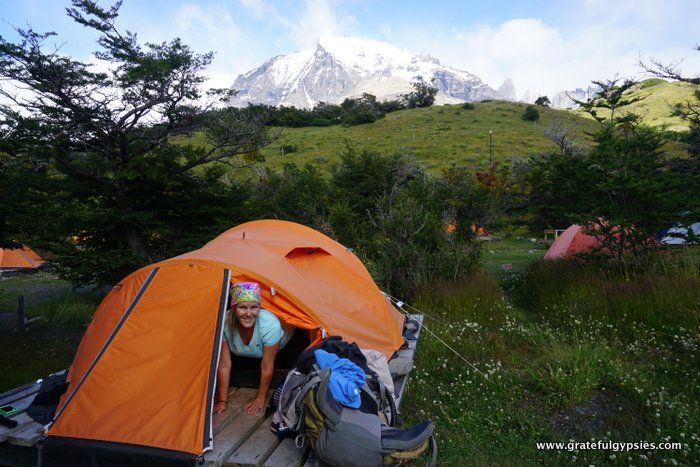Torres del Paine en español (Parte Uno) Posted by sasha on Jul 18, 2018 in Videos
El parque nacional Torres del Paine es uno de los lugares más hermosos de Chile (Torres del Paine national park is one of the most beautiful places in Chile). Going on a multi-day hiking and camping trip there is sure to be a highlight of your trip.
See what hiking in Torres del Paine looks like and learn some Spanish in the first video of a new series called “Torres del Paine en español.”
El parque nacional Torres del Paine está ubicado al sur de Chile. Está ubicado en la región conocida como Patagonia.
Es uno de los parques más grandes y más visitados del país. “Paine” no significa dolor, significa “azul” en la lengua nativa de los Tehuelche.
Cuando te bajas del bus, necesitas registrarte y comprar un ticket. Entonces puedes tomar un bus al centro de visitantes.
Haz una pausa para un café aquí antes de ingresar al campamento. También puedes anotarte para ir a dar una vuelta a caballo.
Los campamentos aquí son reservados con meses de anticipación durante la temporada alta.
Las carpas están disponibles para arriendo si no tienes una. Deja tus maletas y sal para un día de caminata a las Torres.
Es un día largo, toma alrededor de 8 horas ida y vuelta. Hay una vista preciosa a lo largo de todo el camino.
This video series is meant to be an exercise in listening and reading. As such, there are no English translations here. You can go back and read the full post on Torres del Paine to see the English translations.

Build vocabulary, practice pronunciation, and more with Transparent Language Online. Available anytime, anywhere, on any device.




